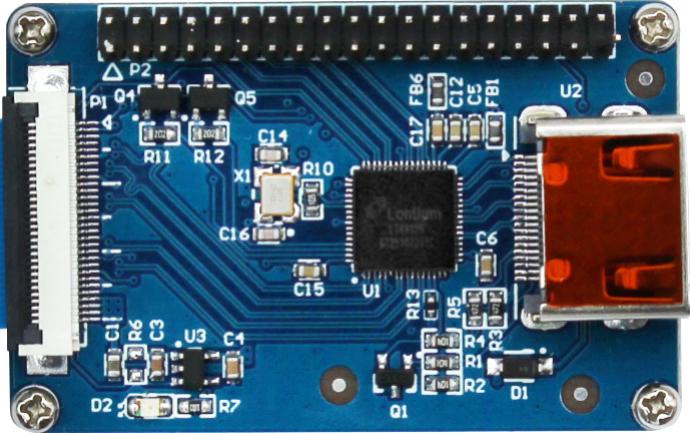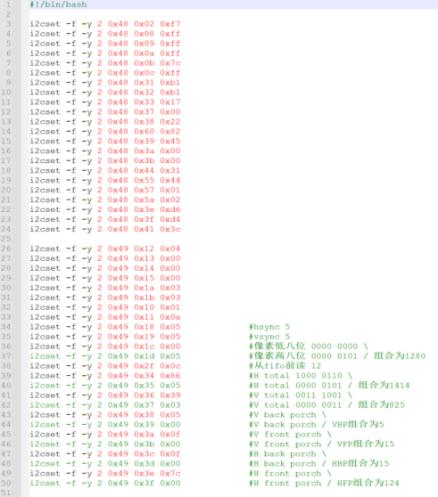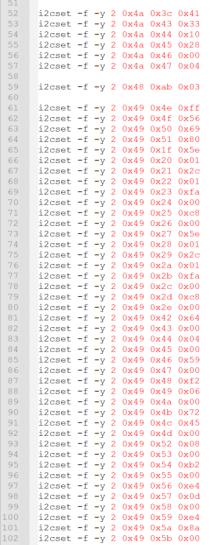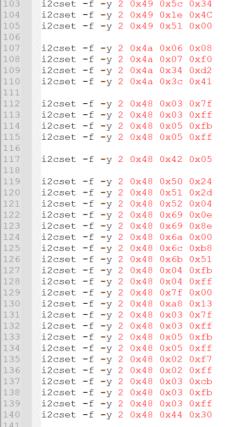This solution employs Lontium Semiconductor's LT8912B, which features a single MIPI D-PHY receiver with four data lanes, each running at speeds of 80Mbps to 1.5Gbps, with a maximum input bandwidth of 6Gbps.
LVDS has 1 clock lane and 4 data lanes for a maximum of 1.0 Gbps per data lane. The HDMI output supports the HDMI 1.4 standard, allowing for a maximum output of 60Hz at 1080p resolution with 8-bit color depth. The LT8912B does not support DDC and HDCP.
This article describes how to use LT8912B to convert MIPI to LVDS. The hardware implementation can involve directly designing the LT8912B chip onto the carrier board or designing an adapter board to connect LT812B to the OK7110-C development board.




Place the test.sh script under /usr/bin/, or you can modify the name as you wish. Then, modify the path in the service configuration file.
vi /usr/lib/systemd/system/systemd-fsck@.service
Note that a row has been addedExecStartPost=/usr/bin/test.sh &
Note that if the path is modified, the path in the added line needs to be matched /usr/bin/test.sh
[Service]
Type=oneshot
RemainAfterExit=yes
ExecStart=/usr/lib/systemd/systemd-fsck %f
ExecStartPost=/usr/bin/test.sh &
TimeoutSec=0
Modify the device tree OK7110-C.dts

Originally published at www.forlinx.net.
LVDS has 1 clock lane and 4 data lanes for a maximum of 1.0 Gbps per data lane. The HDMI output supports the HDMI 1.4 standard, allowing for a maximum output of 60Hz at 1080p resolution with 8-bit color depth. The LT8912B does not support DDC and HDCP.
This article describes how to use LT8912B to convert MIPI to LVDS. The hardware implementation can involve directly designing the LT8912B chip onto the carrier board or designing an adapter board to connect LT812B to the OK7110-C development board.
Software modification method:
Create a script file test. Sh to write the register parameters of I2C of LT8912B chip (the parameter configuration in this article is based on an LVDS screen with single 8-lane, 1280X800 resolution, and GT928 touch chip, and the specific parameter configuration is mainly based on the actual screen parameters).Place the test.sh script under /usr/bin/, or you can modify the name as you wish. Then, modify the path in the service configuration file.
vi /usr/lib/systemd/system/systemd-fsck@.service
Note that a row has been addedExecStartPost=/usr/bin/test.sh &
Note that if the path is modified, the path in the added line needs to be matched /usr/bin/test.sh
[Service]
Type=oneshot
RemainAfterExit=yes
ExecStart=/usr/lib/systemd/systemd-fsck %f
ExecStartPost=/usr/bin/test.sh &
TimeoutSec=0
Modify the device tree OK7110-C.dts
Originally published at www.forlinx.net.